How Much It Costs to Backpack South America for 6 Months
Curious about the real cost of backpacking South America for 6 months? This detailed budget breakdown covers everything from daily expenses to travel hacks - perfect for female travelers planning an adventurous, budget-friendly trip.
Sasha Hjort
5/8/20244 min read
How Much It Costs to Backpack South America for 6 Months
Curious about the real cost of backpacking South America for 6 months? This detailed budget breakdown covers everything from daily expenses to travel hacks - perfect for female travelers planning an adventurous, budget-friendly trip.
24/8/2025 • 4 min read


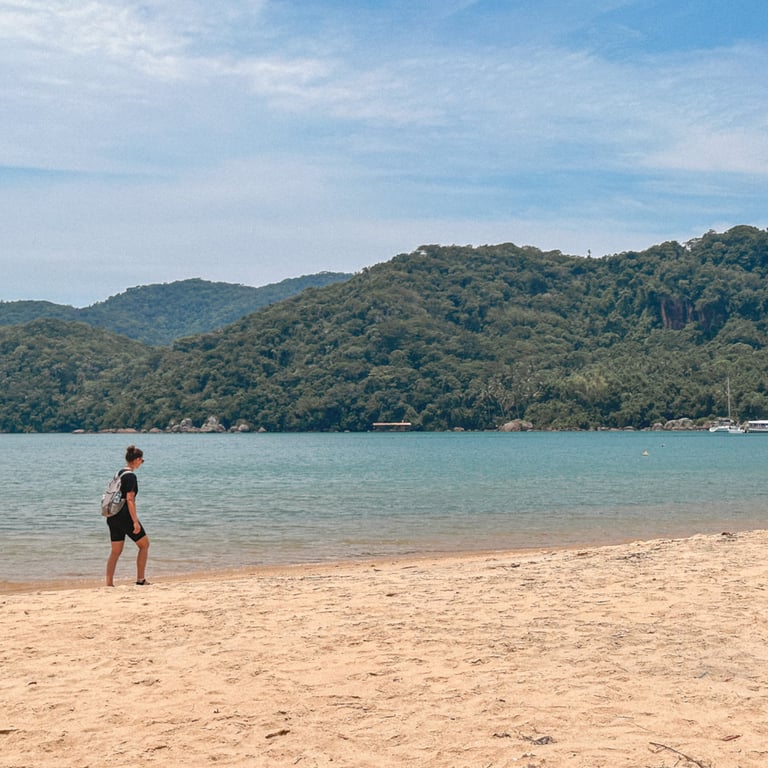

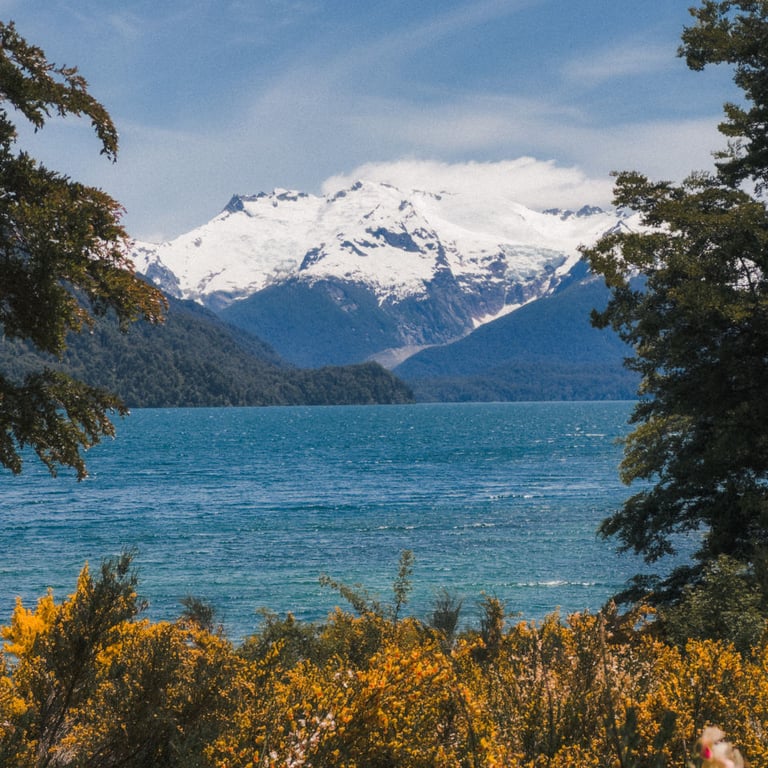

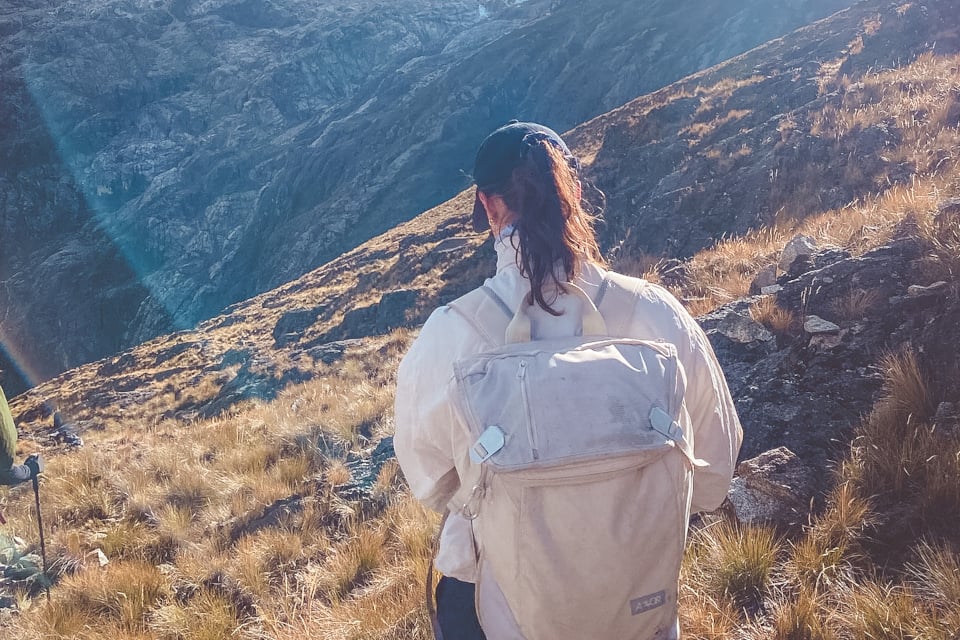

On the way to Laguna 69, Huaraz
I spent 6 months backpacking through Colombia, Ecuador, Peru, Bolivia, Brasil, Argentina, and a tiny slice of Chile -together with a friend. We tracked every peso, sol, and real using a budget app called Tripcoin (only available on the Apple App Store), and let’s just say: some countries are more budget-friendly than others.
If you’ve read my blog, you might know that I also went to Uruguay for two weeks on this trip. But I haven’t included it in this post, as it was more of a vacation I took with another friend before returning home. I’ll cover those expenses in a separate post: Road Trip: Travel along the coastline of Uruguay on Ruta 1
Table of Contents
Click on the topic of interest for faster navigation:
My Total Spend: The Big Picture
We averaged 330 DKK per day per person – that’s around €44 / $48 USD.
Even though I traveled with a friend and we shared many expenses (like accommodation and groceries), all the numbers in this post are calculated per person. That means the average daily cost, total spend, and country breakdowns reflect the expenses of one traveler.
Here’s what I roughly spent in each country:
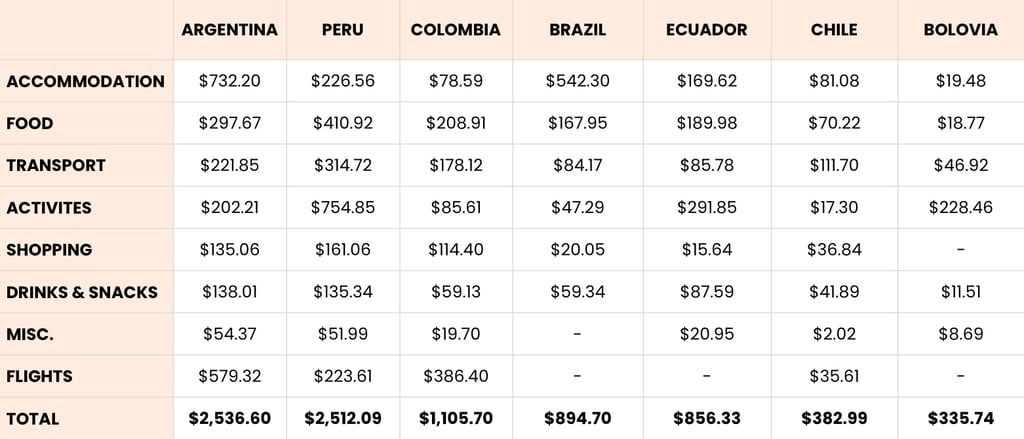

Note: Food includes breakfast, lunch, and dinner. Misc. includes health, laundry, SIM cards, and other small items.
Average Daily Costs by Country
And here’s what two people spent per day on an average:
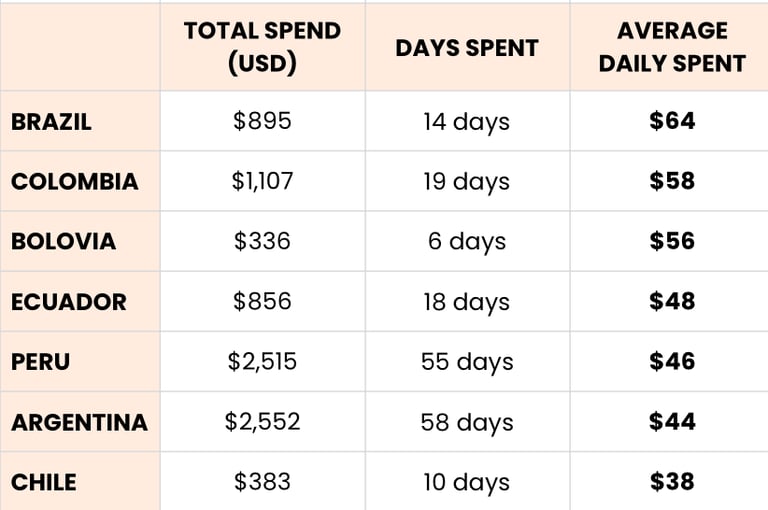

Disclaimer: We spent very few days in Chile. It’s one of the more expensive countries, and for us, it was more of a transit stop—we wanted to save our money for other experiences on the trip why the daily cost is lower.
Tip: Start in cheaper countries like Ecuador or Peru to stretch your budget longer.
Note: We weren’t ultra-budget, but definitely not luxury either. Think “backpacker on a budget who still likes a good shower and a private room at a hostel.
Top spending categories
Here’s where our pesos, soles, and reals actually went
Accommodation – Private hostel rooms with breakfast = budget win.
Food – Street food, desayunos/almuerzos menus for $3–4 (especially in Peru and Ecuador), and home-cooked meals at hostels.
Transport – Public buses, Ubers, and a few flights (Argentina had great deals, and the distances are long).
Activities – From Salkantay Trek towards Machu Picchu to wine tours in Mendoza.
Shopping – Handmade earrings, emergency rain pants, and a few “I deserve this” moments.
Drinks & Snacks – Coffee, cocktails, bus snacks, and a lot of empanadas.
Budget Tips That Actually Worked
Here’s some tips that I would repeat if I went on this kind of adventure again:
Start in budget-friendly countries: Ecuador, Peru, and Bolivia gave us more flexibility later without compromising.
Mix Big Adventures with Chill Days: You don’t need a paid tour every day. Some of my best memories were free hikes—and some of my worst were overpriced tours.
Private hostel rooms = sweet spot: More comfort than dorms, cheaper than hotels, and often include breakfast.
Night buses: long-distance night buses in South America (especially in Peru) were surprisingly comfortable. If you’re going far, why not sleep through it and not pay for a night accommodation?
Cook when you can: Local markets are fun and affordable - and cooking a few meals a week saved us a lot.
Buy bus tickets at the station. Especially in Argentina (online bus apps are way too expensive). RedBus, however, in Peru was great.
Cabin-sized backpack. Avoiding checked luggage saved us money and time at airports.
Track Your Spending Daily: Apps like Tripcoin make it easy to stay on top of your budget.
Read more
Which South America Hikes Are Worth Repeating? Here’s My Take
Discover Huaraz: Peru's Adventure Capital
Is the Uyuni Salt Flat Tour Worth it?
Things I’d Do Differently (So You Don’t Have To)
Overland travel is usually cheaper, but slower. We booked a few flights because the alternative was multiple days on a bus for nearly the same price.
Give yourself a buffer. We had days where we spent twice as much as planned (thanks to last minutes tours and rain gear emergencies).
Pre-budget big activities. If you know a pricey tour is coming up, add it to your budget app early. It helps you regulate your daily spending and avoid surprises.
Exchange rates matter. Argentina’s dual exchange rate system = a budgeting headache. Learn the “blue dollar” system in advance.
Read more
Everything you should know about the blue dollar in Argentina
Pin it for later!
Pin it, print it, or send it to your travel buddy who thinks $20/day is realistic in Brazil.
Related posts for you
© 2025. All rights reserved.
